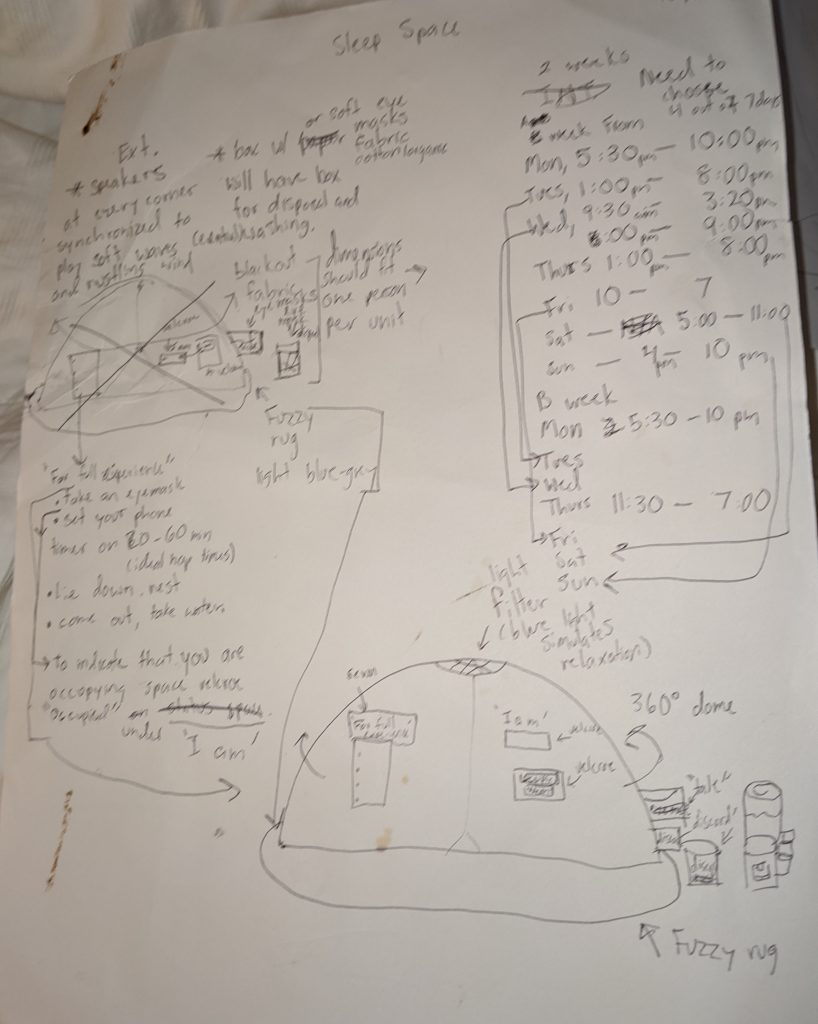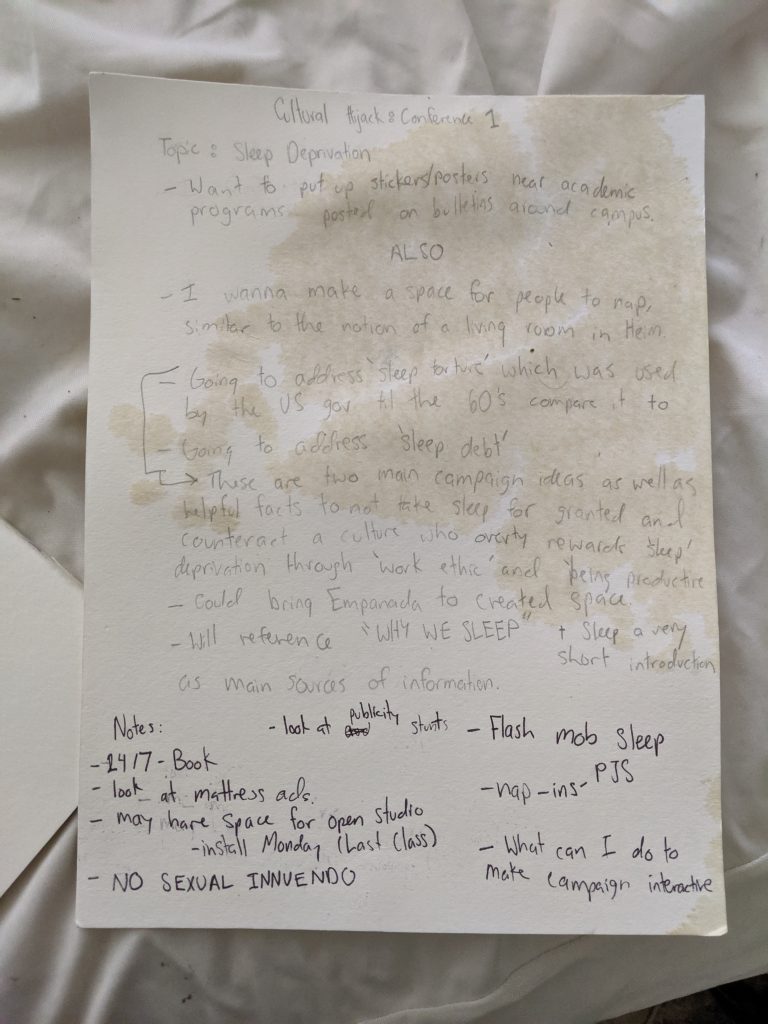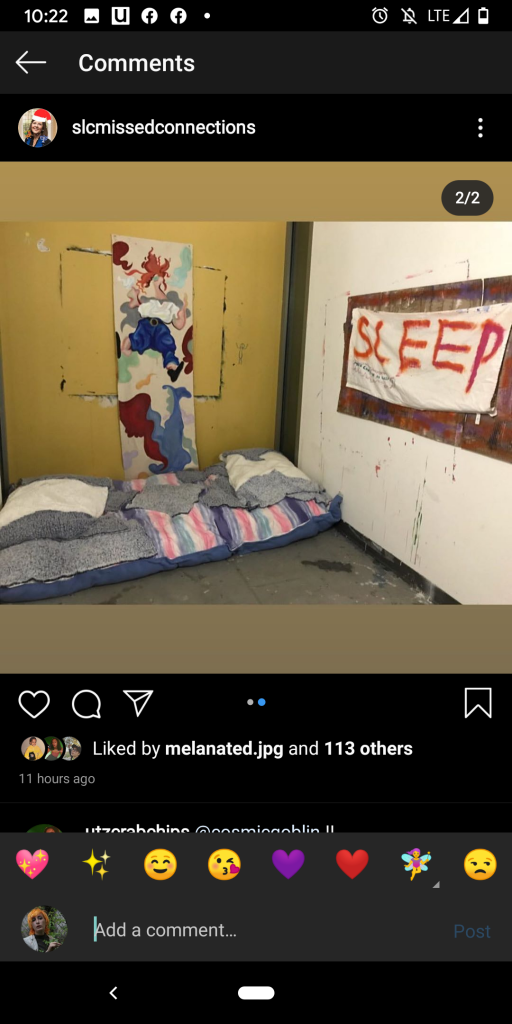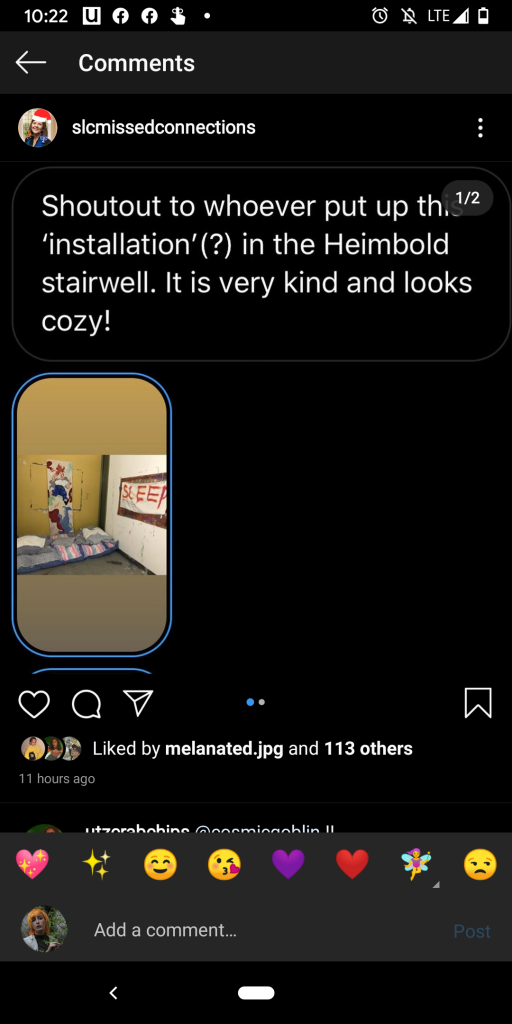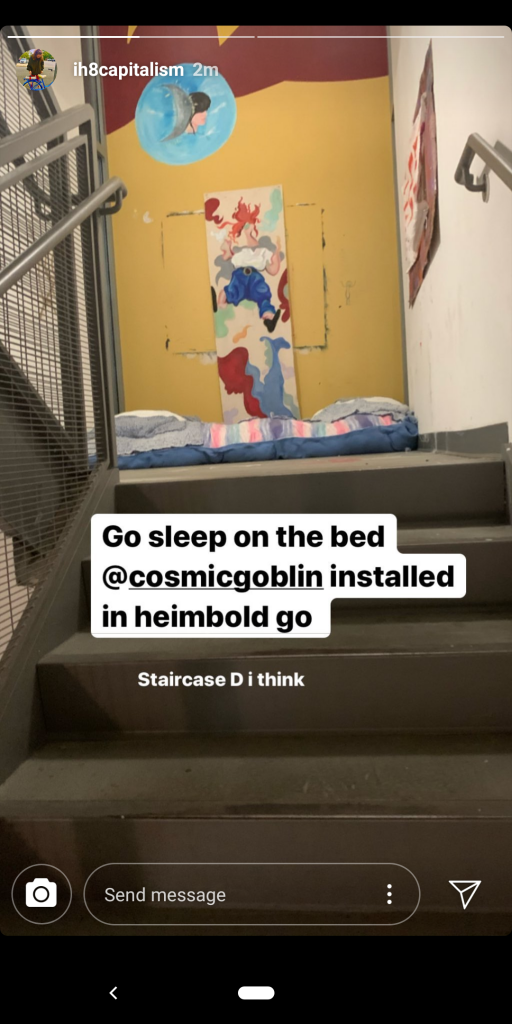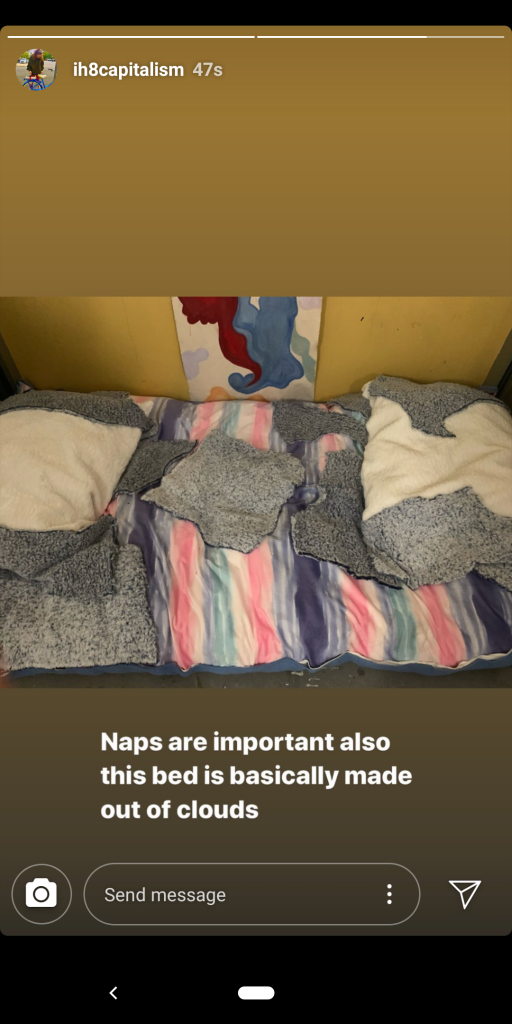The Nap Sack project came into fruition when I was attending my lecture about sleep health. I learned that sleep deprivation is easily dismissed as a health concern. It’s as dangerous to get behind a wheel when you’re sleep-deprived as it is when you are drunk. You also accumulate ‘sleep debt’ which means you’re bodily functions are unable to restore themselves since sleep allows the body to restore brain and other bodily systems. The less sleep you get the more ‘sleep debt’ and more stress you gain and the only way to get rid of ‘sleep debt’ is to well, sleep.
I also took into consideration the type of environment we live and how effective it was to access spaces for ideal rest. Following the Industrial Revolution, the lightbulb introduced the beginning of 24/7 work schedules and an increased need to produce more at a quicker convenience because people could stay up past sunset. This mentality is detrimental to our overall health because it deprives people of the necessary amount of rest they need.
In the Cultural Hijack’s class, we had discussed different methods of effectively hijacking a space. This gave me the idea to create a space where people could access rest in an environment that encourages people to crash study or binge work. My first idea was to create a large dome-like tent that would have a pillowed floor and a sign-in/out card so people would know if it was occupied. I also wanted to include a playlist sounds that would allow people to relax. Eventually, I decided that the signing in/out process was too complicated and would take the ease out of simply wanting to rest. I also would require more time than I had available to build a tent the size I wanted and to schedule changing sheets and pillows so that the installation remained sanitary.

My first attempt at construction 
My Second!
I started from scratch, and thought of something simpler, more accessible and more easily understood. I would make a large 8-foot fabric sack that I’d fill with Poly-fil and put in a public space in Heimboldt for people to access and interact with. I just needed to begin figuring out how I was going to construct the Nap Sack. I started by trying to upholster a large piece of cardboard and using a staple gun to keep the fabric from moving. This proved futile as the fabric was too thick and the cardboard was too malleable. So I tried hot-gluing two long pieces of fabric together and leaving an opening to stuff with Poly-fil. This took a while, but it worked and I decided to add to pillows I would make on either end as well as different fabric to the installation for texture and aesthetic.
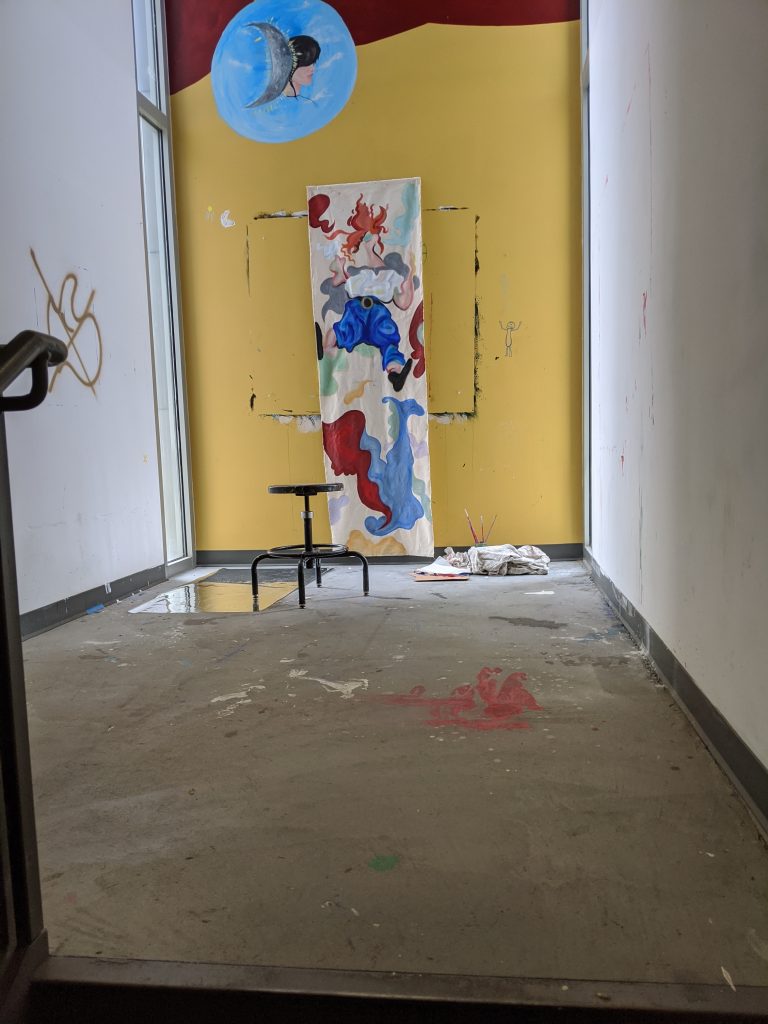
Space of installation (Stairwell D between the 2nd and 3rd floor) 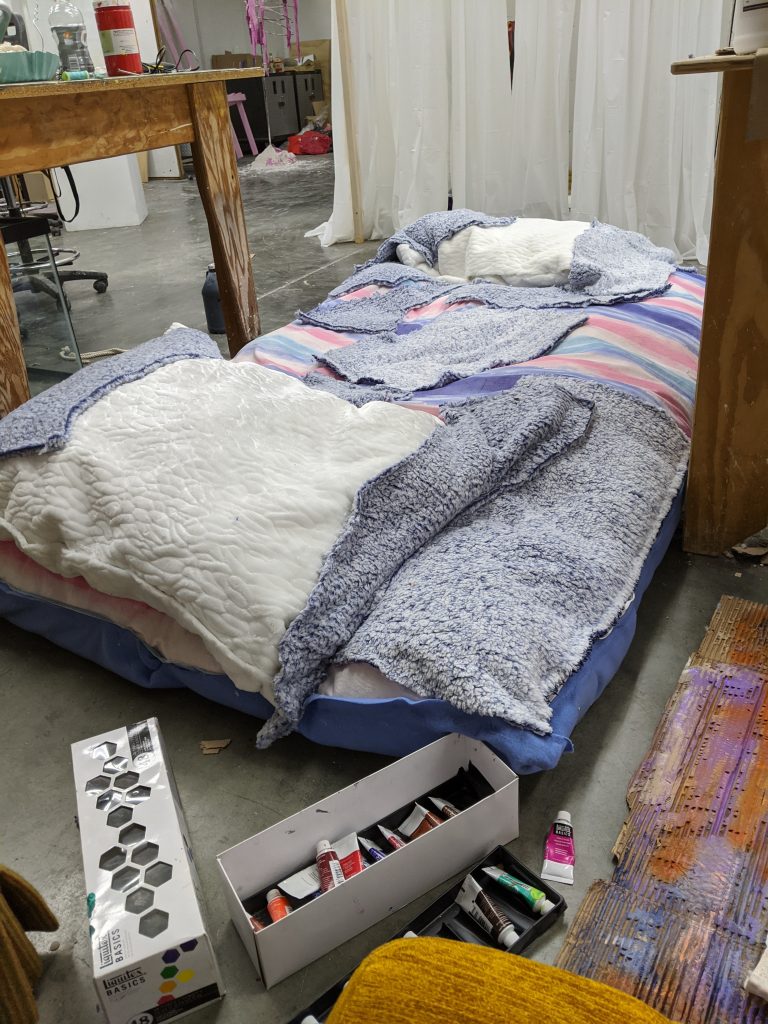
Finished bed, uninstalled.
I had to plan for where and when I was going to install it. This was the most challenging part of this project because I wanted it to be installed in a place that was accessible, but still somewhat quiet. Most importantly, I didn’t want this project to be a hazard by blocking any important pathways within the building. I was able to get the landing between floors 2 and 3 of Heimboldt in stairwell D. The piece would be up for a week for people to use as a resting place.

Testing out the newly installed Nap Sack!
Installing the piece itself was not too difficult. With the help of a friend we dragged the Nap Sack to the installation space and decided to test it out. I also added a cardboard sign that simply told people to ‘SLEEP’ so they knew it was a piece they could interact with.
The responses were overwhelmingly positive. People really understood the work’s function and intention while also enjoying it and interacting with it. I am happy that I could make a space where people can practice self-care in the most fundamental way possible in an environment where they otherwise couldn’t do so. There need to be more sleep-friendly spaces in schools, office buildings, and other institutions that require long hours. Hopefully, pieces like mine could address how important sleep is to our health, our emotions, and our thoughts and why sleep intervention programs or installations are significant to the future of how academic or work settings impact the health of their communities.

